



The IL-2M (1943), also referred to as the "IL-2 production of 1943", was a variant of the IL-2 family. It was produced from November 1942 to December 1943 and units began receiving this variant in the early months of 1943. Main differences between the IL-2M (1943) and earlier IL-2s included an improved AM-38F engine which allowed a return to the relatively high bomb load capacity of around 600 kg. The AM-38F ran at a higher RPM and included a 10-minute "forsazh" (WEP) mode. It also featured a stronger engine block and camshafts. However, it didn't escape the earlier AM-38 and even earlier AM-35A's tendency to overheat and also had reduced compression. Nonetheless, the AM-38F significantly increased the IL-2's capability.
The IL-2M (1943) was introduced in Update 1.49 "Weapons of Victory". It features two 23 mm VYa-23 cannons with 150 rpg and two 7.62 mm ShKAS machine guns with 750 rpg. The VYa cannons have access to a handful of ammunition belts. The armoured target belt has AP rounds that can penetrate up to an impressive 46 mm of armour. There is also a 12.7 mm machine gun behind the pilot which has limited firing angles especially when firing at targets below the aircraft. The IL-2M (1943) has a good variety of ordnance and players will be satisfied with its capability against ground targets.
flaps
flaps
flaps
brake
| Belt | Belt filling | Armor penetration (mm) at a distance: | |||||
|---|---|---|---|---|---|---|---|
| 10 m | 100 m | 500 m | 1000 m | 1500 m | 2000 m | ||
| FI-T/AP-I | 46 | 42 | 29 | 19 | 12 | 8 | |
| FI/FI-T/AP-I | 46 | 42 | 29 | 19 | 12 | 8 | |
| AP-I/AP-I/AP-I/FI-T | 46 | 42 | 29 | 19 | 12 | 8 | |
| Belt | Belt filling | Armor penetration (mm) at a distance: | |||||
|---|---|---|---|---|---|---|---|
| 10 m | 100 m | 500 m | 1000 m | 1500 m | 2000 m | ||
| T/Ball/Ball/AP-I/AI | 13 | 12 | 7 | 3 | 2 | 0 | |
| AP-I/AI/API-T | 13 | 12 | 7 | 3 | 2 | 0 | |
| AP-I/API-T | 13 | 12 | 7 | 3 | 2 | 0 | |
| AP-I/AP-I/AP-I/AI | 13 | 12 | 7 | 3 | 2 | 0 | |
| Belt | Belt filling | Armor penetration (mm) at a distance: | |||||
|---|---|---|---|---|---|---|---|
| 10 m | 100 m | 500 m | 1000 m | 1500 m | 2000 m | ||
| T/AP/AP/IAI | 32 | 30 | 22 | 15 | 11 | 7 | |
| API-T/AP/AP/AP-I(c) | 34 | 32 | 24 | 17 | 12 | 8 | |
| API-T/AP-I | 29 | 27 | 20 | 13 | 9 | 6 | |
| Name | Weight | Slot | ||||||
|---|---|---|---|---|---|---|---|---|
| 2 × | 13.6 kg | 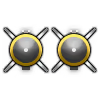 |  | |||||
| 2 × | 30 kg | 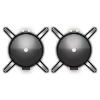 |  | |||||
| 2 × | 47 kg | 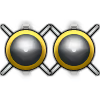 |  | |||||
| 2 × | 83.8 kg |  |  | |||||
| 2 × | 103.2 kg | 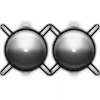 |  | |||||
| 226 kg |  |  | ||||||
| 49.8 kg |  |  | ||||||
| 103.5 kg |  |  | ||||||
| 6 × | 153 kg | 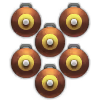 |  | |||||
| 2 × | 99.5 kg | 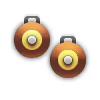 |  | |||||
| 2 × | 207 kg | 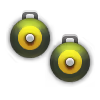 |  | |||||












Flight performance | ||
|---|---|---|
Weaponry | ||
|---|---|---|